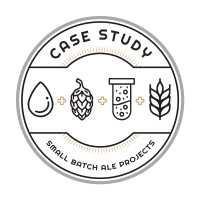Fermentables
|
Amount
|
Fermentable
|
Cost
|
PPG
|
°L |
Bill %
|
|
9 lb |
Raw Honey9 lb Raw Honey |
|
38 |
20 |
60% |
|
6 lb |
Cherry, dark sweet6 lb Cherry, dark sweet - (late fermenter addition) |
|
6.4 |
0 |
40% |
|
15 lbs / $ 0.00
|
Other Ingredients
|
Amount
|
Name
|
Cost
|
Type
|
Use
|
Time
|
|
6 oz |
Hibiscus
|
|
Herb |
Secondary |
0 min. |
|
1.50 tsp |
Diammonium Phosphate (DAP)
|
|
Other |
Primary |
0 min. |
|
1 tsp |
Fermaid O
|
|
Other |
Primary |
0 min. |
|
1.50 tsp |
Pectic Enzyme
|
|
Fining |
Primary |
0 min. |
|
3 each |
Campden Tablets
|
|
Water Agt |
Kegging |
0 min. |
|
1.50 tsp |
Potassium Sorbate
|
|
Water Agt |
Kegging |
0 min. |
Target Water Profile
Balanced Profile
| Ca+2 |
Mg+2 |
Na+ |
Cl- |
SO4-2 |
HCO3- |
|
0 |
0 |
0 |
0 |
0 |
0 |
Notes
Boil water and allow to cool enough to mix honey and water together using a stainless steel stirring rod. Cool must to pitching temperature in fermenter. Pitch yeast and use a stainless steel stir whip on a drill to oxygenate it for about 1-2 minutes.
https://homebrewersassociation.org/homebrew-recipe/hairy-vetch-traditional-mead-2/
Bring 3 cups of water to a boil. Add the hibiscus petals. Let steep for 30 minutes. Ladle off and add to secondary with the cherries. Cherries should be de-pitted, mashed, heated on a stove to 170, then put in a container and frozen. Thaw and add after that. This will ensure minimum spoilage and also allow for maximum extraction.
Cherry Melomels-For tart cherries, add 7-8 lbs of cherries to secondary (1.4-1.6 lbs/gal). When stronger flavors are wanted, add about 1.8 lbs/gal of cherries to secondary. For Sweet Cherries-add 8-9 lbs of sweet cherries to secondary (1.4-1.8 lbs/gal) and around 2 lbs/gal for a stronger sweet cherry flavor.
Use an SNA (stir/whip after each addition)
(Mix the nutrient blend into ½ cup of must and add it back to the fermenter to avoid an explosive release of CO2.) Stir slowly and increase the speed as the CO2 is released. Introduce as much oxygen as you can during the nutrient additions.
Add .75 tsp after pitching yeast.
Add .5 tsp 24 hours after ferm begins.
Add .5 tsp 48 hours after ferm begins.
Add .5 tsp after 30% of the sugar has been depleted.
keep nutrients in small, sealable, plastic fridge containers. Add a little distilled water, shake it up, and add that to the fermenter.
Cap management.
When the must begins to ferment and generate CO2, the fruit will float to the top and form a cap. The temperature underneath the cap can get pretty warm because it cannot escape. CO2 will collect under the cap and is toxic to yeast. The top of the cap will get dry and this environment is ideal for molds and bacteria to flourish.
The cap must be “punched down” at least three times daily during the period of active fermentation. This accomplishes several key things.
It keeps the fruit in contact with the yeast, allowing for a quicker fermentation and better extraction of the fruit characters.
It keeps oxygen in the must at a time when the yeast need it most. Many meadmakers will add pure O2 at the same time they are punching the cap for added assurance that the yeast is getting plenty of oxygen for growth.

Last Updated and Sharing

- Public: Yup, Shared
- Last Updated: 2025-08-07 20:31 UTC
For quick copying and pasting to a text based forum or email.
Click the Download as HTML file button below.
Recipe costs can be adjusted by changing the batch size. They won't be saved but will give you an idea of costs if your final yield was different.
|
Cost $ |
Cost % |
| Fermentables |
$ |
|
Steeping Grains
(Extract Only) |
$ |
|
| Hops |
$ |
|
| Yeast |
$ |
|
| Other |
$ |
|
| Cost Per Barrel |
$ 0.00 |
|
| Cost Per Pint |
$ 0.00 |
|
| Total Cost |
$ 0.00 |
|
Discussion about this recipe:
